第149章 CHAPTER XXI.(3)
Although the elephant is found throughout many countries, extending over an enormous area, there are only two species at present in existence,--the Indian and African; these are totally different in their habits, and are distinguished by peculiarities of form. The most striking difference is in the shape of the head and spine. The head of the Indian species is perfectly distinct;the forehead, when held in the natural position of inaction, is perpendicular; and above the slight convexity at the root of the trunk there is a depression, in shape like a herald's shield: a bullet in the lower portion of that shield would reach the brain in a direct line. The head of the African elephant is completely convex from the commencement of the trunk to the back of the skull, and the brain is situated much lower than in that of the Indian species; the bone is of a denser quality, and the cases for the reception of the tusks are so closely parallel, that there is barely room for a bullet to find a chance of penetrating to the brain; it must be delivered in the exact centre, and extremely low, in the very root of the trunk; even then it will frequently pass above the brain, as the animal generally carries his head high, and thrown slightly back. The teeth of the African elephant differ materially from those of the Indian, by containing a lesser number of laminae or plates, the surfaces of which, instead of exhibiting straight and parallel lines like those of the Indian, are shaped in slight curves, which increase the power of grinding. The ears of the African species are enormous, and when thrown back they completely cover the shoulders; they are also entirely different in shape from those of the Indian species. When an African bull elephant advances in full charge with his ears cocked, his head measures about fourteen feet from the tip of one ear to that of the other, in a direct line across the forehead. I have frequently cut off the ear to form a mat, upon which I have slept beneath the shade of a tree, while my people divided the animal.
The back of the Indian elephant is exceedingly convex; that of the African is exactly the reverse, and the concavity behind the shoulders is succeeded by a peculiarity in the sudden rise of the spine above the hips. The two species are not only distinct in certain peculiarities of form, but they differ in their habits.
The Indian elephant dislikes the sun, and invariably retreats to thick shady forests at sunrise; but I have constantly found the African species enjoying themselves in the burning sun in the hottest hours of the day, among plains of withered grass, many miles from a jungle. The African is more active than the Indian, and not only is faster in his movements, but is more capable of enduring long marches, as proved by the great distances through which it travels to seek its food in the native's corn-fields. In all countries, the bulls are fiercer than the females. I cannot see much difference in character between the Indian and the African species; it is the fashion for some people to assert that the elephant is an innocent and harmless creature, that, like the giraffe it is almost a sin to destroy. I can only say that, during eight years' experience in Ceylon, and nearly five years'
in Africa, I have found that elephants are the most formidable animals with which a sportsman has to contend. The African species is far more dangerous than the Indian, as the forehead shot can never be trusted; therefore the hunter must await the charge with a conviction that his bullet will fail to kill.
The African elephant is about a foot higher than the average of the Indian species. The bulls of the former are about ten feet six inches at the shoulder; the females are between nine feet and nine feet six. Of course there are many bulls that exceed this height, and I have seen some few of both species that might equal twelve feet, but those are the exceptional Goliaths.
The tusks of elephants vary considerably, and there appears to be no rule to determine a reason for their size and quality. In Abyssinia and Taka, a single tusk of a bull elephant seldom exceeds forty pounds, nor do they average more than twenty-five, but in Central Africa they average about forty, and I have seen them upwards of one hundred and fifty pounds. The largest that Ihave had the good fortune to bag was eighty pounds; the fellow-tusk was slightly below seventy. Elephants invariably use one tusk in preference, as we use the right hand; thus it is difficult to obtain an exact pair, as the Hadam (or servant), as the Arabs call the working tusk, is generally much worn. The African elephant is a more decided tree-feeder than the Indian, and the destruction committed by a large herd of such animals when feeding in a mimosa forest is extraordinary; they deliberately march forward, and uproot or break down every tree that excites their appetite. The mimosas are generally from sixteen to twenty feet high, and, having no tap-root, they are easily overturned by the tusks of the elephants, which are driven like crowbars beneath the roots, and used as levers, in which rough labour they are frequently broken. Upon the overthrow of a tree, the elephants eat the roots and leaves, and strip the bark from the branches by grasping them with their rough trunks.